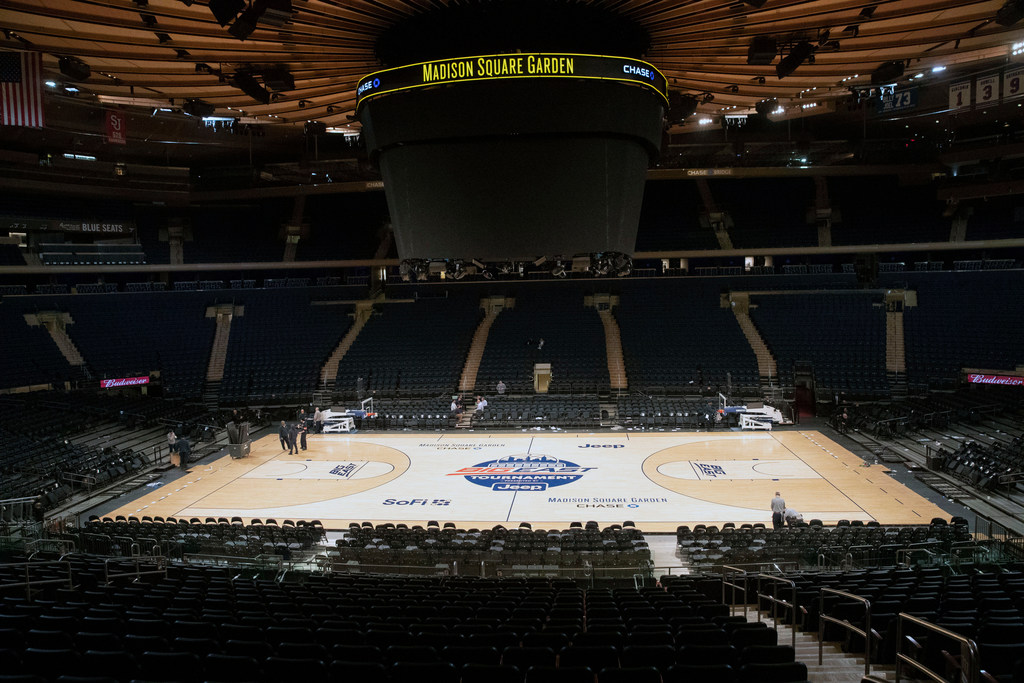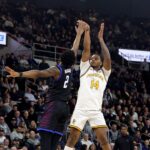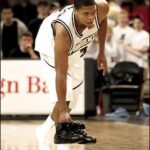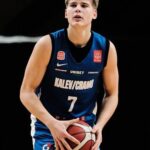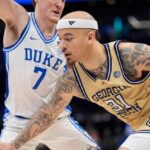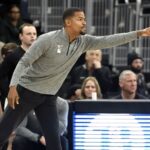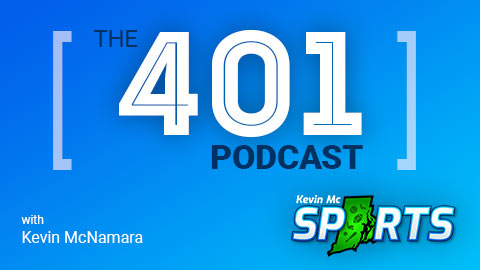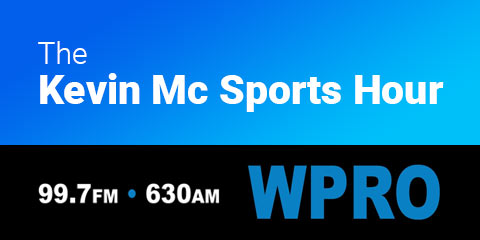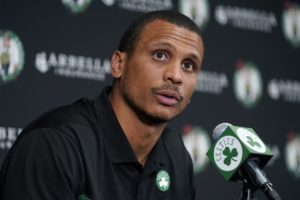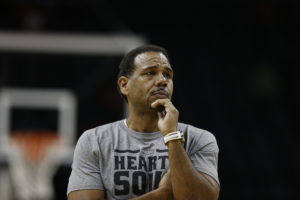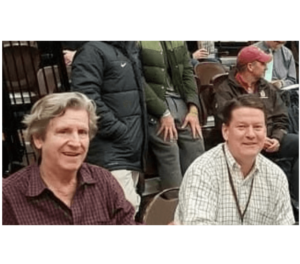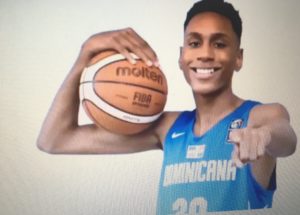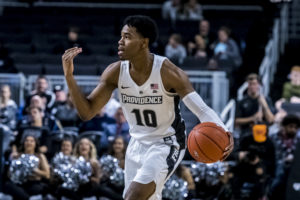By KEVIN McNAMARA
It isn’t often that a ride on the Northeast Regional out of Providence down to New York’s Penn Station can be described as exciting. Scenic maybe, but a bit tedious nonetheless.
Yet one particular train trip to the Big Apple every March is always filled with anticipation. The three hours breeze by thanks to hopes and dreams and the seductive promise of everlasting memories.
“It’s the Big East. I wouldn’t miss it,” said Mike Beauparlant, an East Providence resident who’s taken the trip to New York with the same group of pals for a decade. “It’s all basketball and fun. It’s the best.”
Beauparlant and his pals settled into my Amtrak car that cool, sunny day. They were far from the only Providence College Friar fans flashing some basketball spirit. Middle-aged men in their Georgetown and Villanova sweatshirts also walked past and spotted the fellas. “Providence is playing well,” one graciously offered, “but ‘Nova’s got their number.”
Awaiting in New York was a friend from Chicago who’d rented a stylish Airbnb apartment in SoHo he’d share with two PC fans. A few hours behind the train my sister was rolling down Route 95 in an SUV. Two of her sons had never seen a Big East Tournament game so they kept busy scrambling for a sweet buy on VividSeats and StubHub.
Besides the enthusiastic talk of Ed Cooley’s surging Friars, there was one looming question that hovered in the air of that Amtrak car: the coronavirus. With the biggest weeks of the college basketball season at hand, the virus was clearly spreading but it was just a bad strain of the flu, right? The virus had rifled through Seattle and popping up in a few other cities but New York’s hotels were open, subways were rolling, the Friars and the Hoyas and the Bluejays were in the city and ready to rock Madison Square Garden.
After all, this virus thing couldn’t take away the Big East, right? Just give me the Big East, give me my annual taste of March Madness.
—
The opening night of the Big East went off as scheduled. St. John’s thrilled the locals at the Garden by rallying from 15-points down to shock Patrick Ewing and Georgetown. Soon after I was entertaining my nephews, the cool uncle buying the drinks at a few watering holes. In between Jim Beams and Harp drafts, games on ESPN flickered behind the bar. Then, in big, block letters the following headline flashed on the screen and brought me to my knees.
NBA SUSPENDS SEASON AFTER RUDY GOBERT TESTS POSITIVE FOR CORONAVIRUS.
What? Why? This. Is. Not. Good.
Within hours, if not minutes, of the news that the Utah Jazz center was indeed infected, the sports world began to crumble. A few days earlier the Ivy League had actually jumped the gun on the rest of the college sports world by cancelling its basketball tournament. The egg heads were mocked at the time, but now they regained their deserved brilliant stature. The Big East issued a press release at 10:30 p.m. announcing it would continue playing under a “restricted attendance policy,” that basically limited Garden access to player’s families.
This news flash sent shock waves throughout the City. It ruined my nephews’ hopes of seeing Big East hoops, a development that only increased their alcohol consumption and sent them rolling deep into the wee hours of the morning.
By the morning of March 12, the sports world was spinning out of control. The NBA and the NHL were a few weeks away from their playoffs. The PGA Tour had started its Players Championship in Ponte Vedra, Fla. Baseball players were set to pack up their bats and balls and leave Florida and Arizona for the promise of Opening Day. The NCAA was prepared to pick the field for March Madness and play its tournament the next week without fans in the stands.
Within hours, however, everything collapsed. Big East commissioner Val Ackerman spent that Thursday morning talking to officials at the Garden, the City of New York’s Health Department and other conference commissioners. While the ACC, Atlantic 10, Big Ten and Big 12 shut their tournaments down before a Noon tipoff, the Big East’s quarterfinals oddly began. St. John’s and Creighton tossed the ball up with 400 or so people milling around the Garden’s first 15 rows.
Late in the half, I ran into a referee pal on hand to work the Providence-Butler game set for 2:30. He expressed the obvious – that things were set to end – by making a slitting gesture across his throat. Only seconds after the halftime buzzer, things did end. The Big East Tournament was over.
“Seeing that happen, however correct the decision, was the worst day of my career,” associate commissioner John Paquette said, echoing the sentiment of anyone who loves college basketball.
I retreated to my hotel room and called PC coach Ed Cooley. By then he was with his team on a charter bus back to Rhode Island. He said he had been dressed and ready to drive the few blocks over to the Garden when school president Rev. Brian Shanley and athletic director Bob Driscoll called his room at the Affinia Shelburne Hotel.
“I knew that wasn’t good,” Cooley said.
Most of the Friar players were pulled off the team bus, given the news in a hotel conference room and told to pack their bags and return to the bus in a half hour. Devastation filled the room.
“They were sobbing,” Cooley said. “I’m totally hurt for all the seniors and players around the country. There’s nothing else really to say. It’s very sad.”
At 4:30, the final shoe inevitably dropped. The NCAA announced that its tournament, the national celebration of basketball, was cancelled. The Friars were rolling through Connecticut when that news broke, many players asleep in sorrow. By the time they reached Westerly their phones were red hot with the dreadful news.
“We couldn’t believe it, really,” said senior big man Kalif Young. “We didn’t know what we know now. We just wanted to keep playing.”
I remember writing that the doctors and the scientists were now in charge. The worldwide pandemic was indeed very real. The prediction of widespread outbreaks seemed far-fetched, but was scary nonetheless. This was before America came to grips with terms like social distancing and flattening the curve. No one had ever heard of Dr. Anthony Fauci.
No one could’ve imagined what a full-fledged pandemic looks like, a killer virus blazing its way through nursing homes. We soon became aware of the value of PPE and the importance of owning the smartest and bravest doctors and nurses in the world.
When I left for New York my wife handed me a small bottle of hand sanitizer and said `make sure you use it.’ That was my protection against Covid-19, in New York City, the soon-to-be epicenter of this killer virus. It would be just days before a media pal of mine would be stricken by the virus, brought to his knees in fact. That over 200,000 (and counting) Americans would die over the next six months was truly unfathomable.
Blessed with such naivete, I wrapped up my gloomy story after six o’clock and made an Amtrak reservation for the next morning. Then I did what any depressed sportswriter worth his salt would do: I caught up with my crazy, stranded basketball friends in Greenwich Village and drank like a wounded sailor.
The Day the Music Died, the worst day in sports history, was over.

